Peter Keglevic may refer to:
- Petar Keglević (died in 1554 or 1555), ban of Croatia and Slavonia
- Péter Keglevich (1660–1724), Croatian nobleman, governor and military officer
- Peter Keglevic (born 1950), Austrian film director and screenwriter
Peter Keglevic may refer to:

Jajce is a town and municipality located in the Central Bosnia Canton of the Federation of Bosnia and Herzegovina, an entity of Bosnia and Herzegovina. According to the 2013 census, the town has a population of 7,172 inhabitants, with 27,258 inhabitants in the municipality. It is situated in the region of Bosanska Krajina, on the crossroads between Banja Luka, Mrkonjić Grad and Donji Vakuf, on the confluence of the rivers Pliva and Vrbas.

Krapina is a town in northern Croatia and the administrative centre of Krapina-Zagorje County with a population of 4,482 (2011) and a total municipality population of 12,480 (2011). Krapina is located in the hilly Zagorje region of Croatia, approximately 55 km (34 mi) away from both Zagreb and Varaždin.
Kovačić, alternatively spelled Kovačič in Slovene and Slovak, Kovacsics in Hungarian, or transliterated as Kovacic/Kovacich/Kovachich in English, is one of the most common surnames in Croatia, Slovenia, as well as Hungary and Serbia. Etymologically it is a patronymic derivative of the surname Kovač, which is a Slavic cognate of the English surname Smith, and as such is closely related to the similar surname Kovačević.

Croatian nobility was a privileged social class in Croatia during the Antiquity and Medieval periods of the country's history. Noble families in the Kingdom of Croatia included high ranking populates from Slavonia, Dalmatia, Istria, and Republic of Ragusa. Members belonged to an elite social hierarchy, normally placed immediately behind blood royalty, that possessed considerably more privileges or eminence than most other classes in a society. Membership thereof typically was often hereditary. Historically, membership in the nobility and the prerogatives thereof have been regulated or acknowledged by the monarch. Acquisition of sufficient power, wealth, military prowess or royal favour enabled commoners to ascend into the nobility. The country's royalty was heavily influenced by France's nobility resulting members of the Royal Courts to assume French titles and practices during French occupation. The controversial assumption of French practices contributed to wide spread political and social elitism among the nobles and monarch. The nobility regarded the peasant class as an unseen and irrelevant substrata of people which lead to high causality revolts and beheadings as well as sporadic periods of intense domestic violence.

Črnomerec is one of the city districts of Zagreb, Croatia. It is located in the western part of the city and has nearly forty thousand inhabitants.

Otočac is a town in Croatia, former bishopric and present Latin Catholic titular see. It lies in the northwestern part of Lika region, in the Gacka river valley. The population of the administrative area of the Town of Otočac was 9,778 in 2011, with 4,240 in Otočac itself, the majority of whom were Croats (91%).

Petar Keglević II of Bužim was the ban of Croatia and Slavonia from 1537 to 1542. He was also a captain of Bihać from 1535 - 1539.

Selnica is a village and municipality in Međimurje County, in northern Croatia.
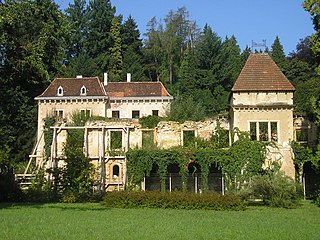
Opeka Manor is a castle in the Vinica municipality, Varaždin County, northern Croatia.
Peter Keglevic is an Austrian film director and screenwriter. He has directed 30 films since 1976. His film Bella Donna was screened at the 1983 Cannes Film Festival.

Stockholm Marathon is a 1994 film directed by Peter Keglevic about the Swedish police detective Martin Beck, loosely based on the last Martin Beck novel, The Terrorists (1975). The title song for the film, "Marathon of Life", was written by Ralf Stemmann and performed by Thomas Anders.
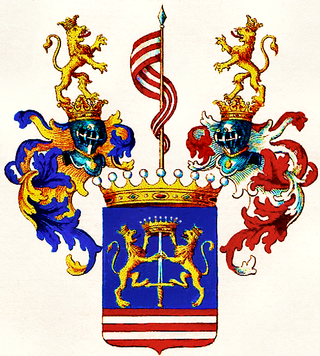
The House of Keglević or Keglevich is a Croatian noble family originally from Northern Dalmatia, whose members were prominent public citizens and military officers. As experienced warriors, they actively participated in the Croatian–Ottoman and Ottoman–Hungarian wars, as well were patrons of the arts and holders of the rights of patronage over churches and parishes.
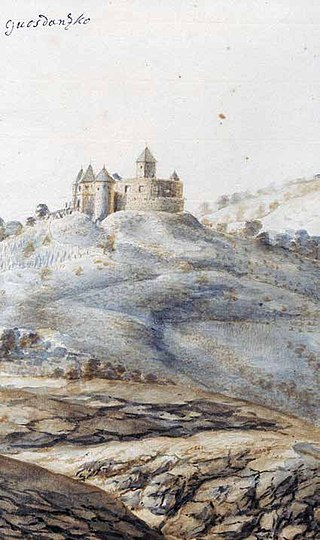
The siege of Gvozdansko was an Ottoman siege of the fort of Gvozdansko in the Kingdom of Croatia in 1577–1578. In the 1570s, the Ottomans intensified their efforts to capture the valley of the Una River. A string of forts along the Una, centred around Gvozdansko and in possession of the Zrinski noble family, formed the main line of defense of Croatia since 1527. The fort held off Ottoman attacks in 1540 and 1561.

The House of Ernuszt was a Hungarian noble family, descending from a rich Jewish family who came to medieval Hungary from Vienna, converted to Catholicism and also reached its peak in the Kingdom of Croatia during the reign of King Matthias Corvinus and his successors. Notable members of the family were bans of Croatia and Slavonia, king's chamberlains, bishops, ispáns, župans (counts) and other state officials.
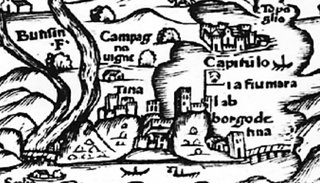
The siege of Knin was a siege of the city of Knin, the capital of the Kingdom of Croatia, by the Ottoman Empire in 1522. After two failed attempts in 1513 and 1514, Ottoman forces led by Ghazi Husrev Bey, sanjak-bey (governor) of the Sanjak of Bosnia, launched a major offensive on southern Croatia in the spring of 1522. In May, his forces, reinforced with troops from the Sanjak of Herzegovina and Constantinople, besieged the Knin Fortress.
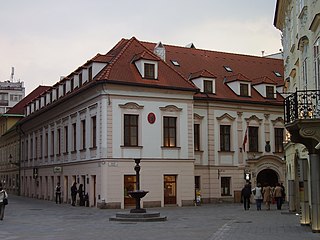
Keglevich Palace is a Baroque mansion on Panska Street 27 in Bratislava, Slovakia. It is included among the National Monuments Reservation of the city and is also listed as a Cultural Real-estate Monument. The last reconstruction was in 1998, involving the roof and facade rendering. Following the reconstruction a new street was named Strakova Street. It is between Venturian Street and Hviezdoslavovo námestie (Bratislava).
Caspar Ernuszt de Csáktornya was a Hungarian noble, the last male member of the Ernuszt family.

The House of Orehovečki was a Croatian noble family, descending from Sveti Petar Orehovec in the former Bjelovar-Križevci County, where it had its largest estates, and reached its peak in the 17th century. Thanks to the marriage connections, it was connected to many influential noble families like Keglević, Patačić, Ratkaj, Alapić etc. Notable members of the family were important state officials, military officers, Catholic Church prelates and so on.

The Battle of Jajce took place in January 1518 during a series of wars between the Ottoman forces of Husrev Beg, Beylerbey of the Bosnia Eyalet, and the Hungarian and Croatian forces led by Croatian Ban Petar Berislavić. The battle was a part of the Croatian–Ottoman wars and Ottoman–Hungarian wars.
Peter VII Keglevich of Buzin, was a Croatian nobleman, governor and military officer. A member of the Keglević family was a Commander-in-chief, Imperial Army General, Lieutenant of Ban (Viceroy) of Croatia and a Croatian count.